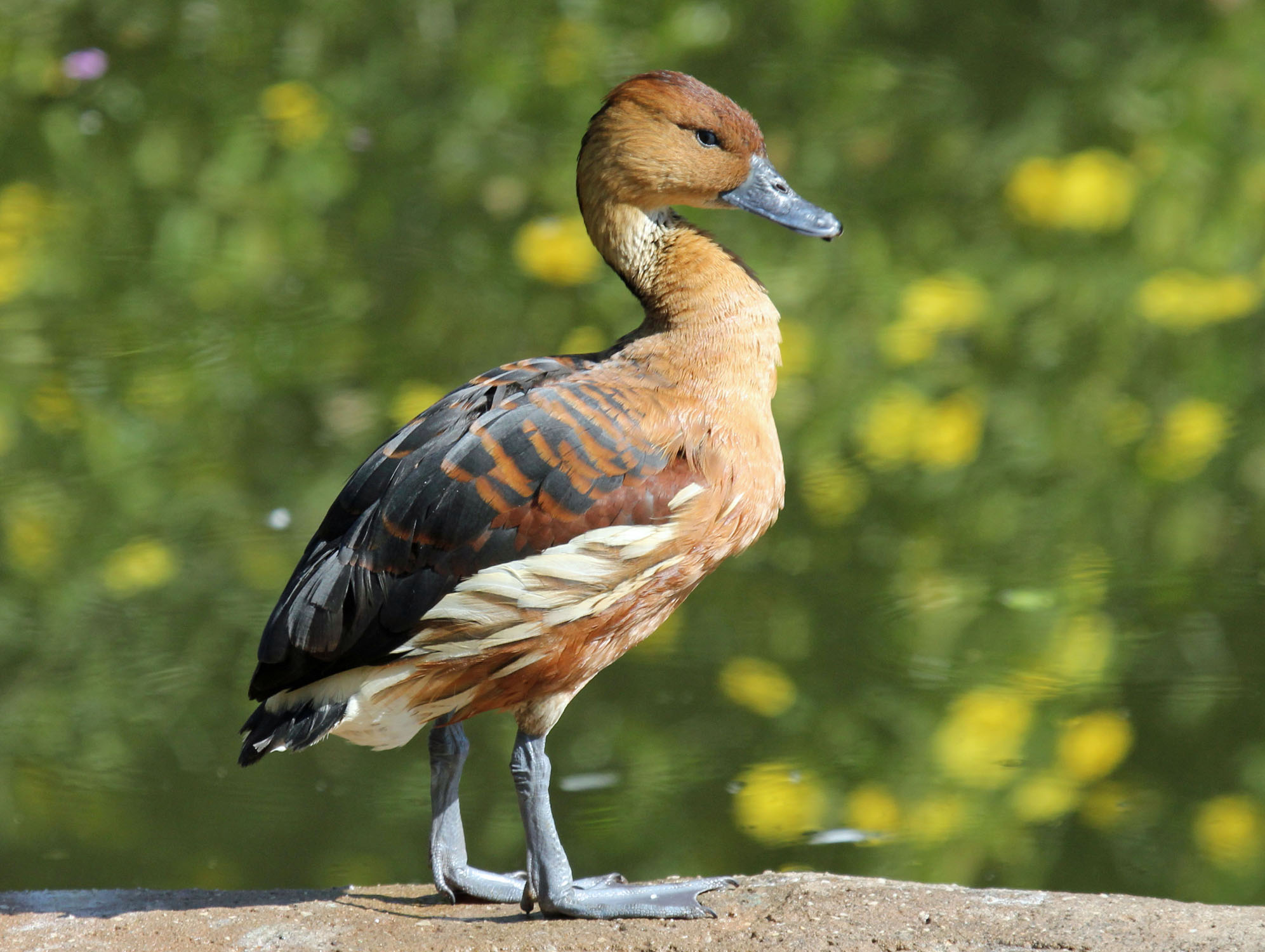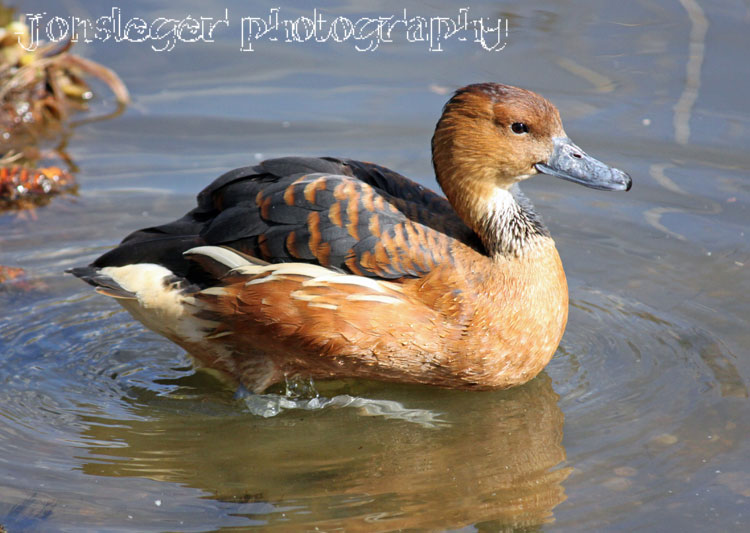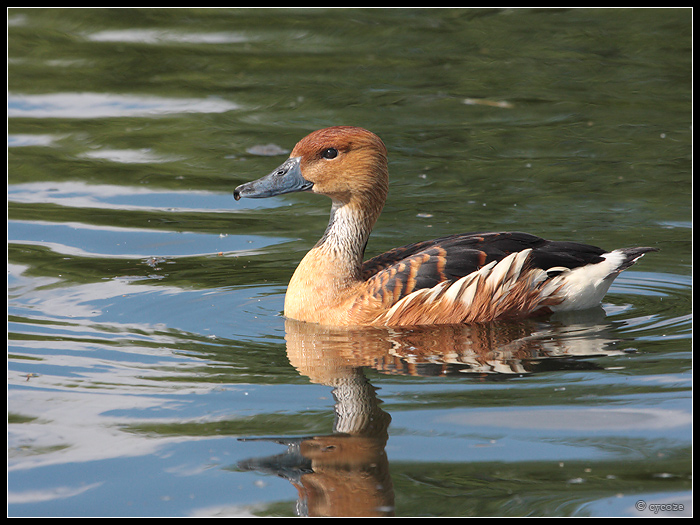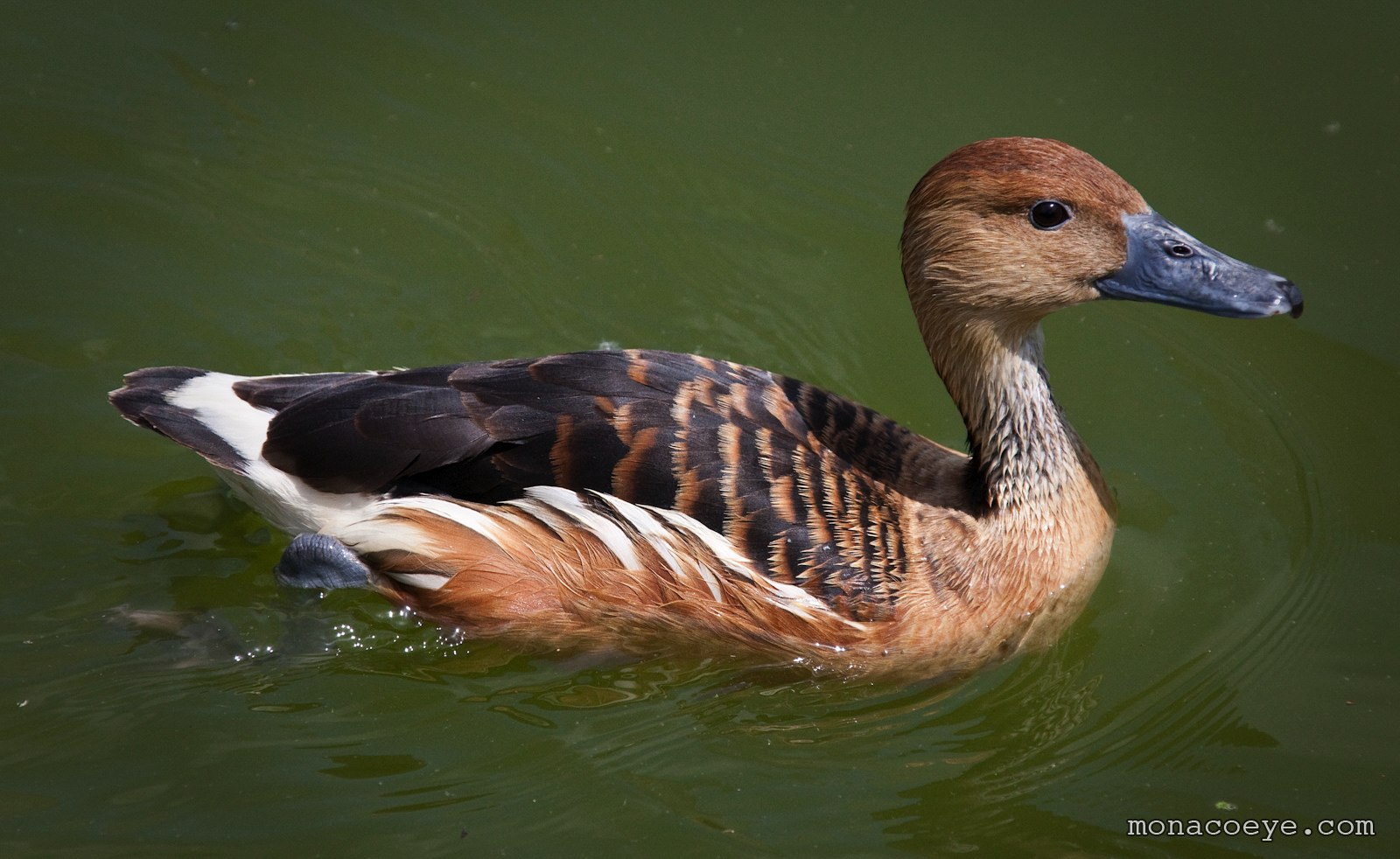
Fulvous WhistlingDuck Audubon Field Guide
Scientific Name of Fulvous whistling duck is Dendrocygna bicolour. It is also known from some different names like Mexican squealer, squealer, Fulvous tree duck. Appearance Of Fulvous Whistling-Duck: A rufous-brown crown is a crown that the adult fulvous whistling ducks wear, irrespective of the gender they all have that crown and upper nape.

Bird of the Day The Fulvous and BlackBellied Tree Ducks
Whistling-ducks are a distinctive group of about 8 species of brightly colored, oddly proportioned waterfowl. The Fulvous Whistling-Duck is a mix of rich caramel-brown and black, a long-legged and long-necked creature found in warm freshwater marshes across the Americas, Africa, and Asia. In the United States they are rarely found far from rice fields, which provide both food and an optimal.

Fulvous Tree Duck ZooChat
The fulvous whistling duck or fulvous tree duck (Dendrocygna bicolor) is a species of whistling duck that breeds across the world's tropical regions in much of Mexico and South America, the West Indies, the southern United States, sub-Saharan Africa and the Indian subcontinent. It has plumage that is mainly reddish brown, long legs and a long grey bill, and shows a distinctive white band.

Fulvous Whistling Duck Profile Facts Fly Female Range Bird Baron
The fulvous tree duck is more easily approached than many other waterfowl, but nevertheless is often difficult to find as it congregates among the dense tules or far out on the marshy ponds. On occasion a flock has been easily approached and. a number killed at one shot. Sometimes, when tree ducks are surprised on grassy ground, they simply.

Fulvous tree duck (Dendrocygna bicolor) ZooChat
The Fulvous Whistling-Duck usually nests on the ground near water but may also nest in trees or cattails. Their diet consists mostly of seeds from grasses or sedges as well as aquatic plants such as pondweeds or duckweed. They also eat invertebrates such as mollusks (snails), crustaceans (crayfish), or insects like dragonflies or beetles.

Northern Illinois Birder Fulvous Whistling or Tree Duck and Blackbellied Tree Duck
Whistling-ducks are a distinctive group of about 8 species of brightly colored, oddly proportioned waterfowl. The Fulvous Whistling-Duck is a mix of rich caramel-brown and black, a long-legged and long-necked creature found in warm freshwater marshes across the Americas, Africa, and Asia. In the United States they are rarely found far from rice fields, which provide both food and an optimal.

Fulvous Tree Duck pair
12-14, sometimes 6-16. Whitish, becoming nest-stained. Females may lay eggs in each others' nests (or nests of other species); such "dump nests" can contain 60+ eggs. Incubation by both sexes, 24-26 days. May leave eggs unattended for hours on warm days until close to hatching time. Young: can swim and dive well.

Duck (Fulvous Tree) Dudley Zoological Gardens
The Fulvous Tree Duck (Dendrocygna bicolor) — more frequently known as the Fulvous Whistling Duck — is a medium-sized, caramel-brown and black, long-necked and long-legged duck. In the United States, they are found in and around rice fields, crayfish farms and flooded pastures in Florida, Texas and Louisiana..

Fulvous Tree Duck (Dendrocygna bicolor) The Fulvous Whistl… Flickr
Fulvous whistling ducks are a bit smaller than the black-bellied, but weigh about the same. The fulvous makes a high-pitched two-note call, similar to a wood duck's pre-dawn squeal.

fulvous tree duck 10 mile creek Patti Ireland Flickr
Other articles where fulvous tree duck is discussed: whistling duck:.of the tribe is the fulvous tree duck (Dendrocygna bicolor), with isolated populations in North and South America, India, and Africa—a most unusual world distribution and, remarkably, without geographic variation. It is mallard-sized, with a rusty brown body, a white rump, and creamy stripes on the flanks.

Fulvous Tree Duck by cycoze on DeviantArt
Fulvous Whistling-Ducks, formerly known as Fulvous Tree Ducks, are among the most widespread waterfowl in the world, found throughout tropical and subtropical areas of Africa, Asia and the Americas, especially in rice-growing regions. These birds consume a diet rich in moist-soil and aquatic plant seeds; such as rice seeds and aquatic.

The fulvous whistling duck or fulvous tree duck (Dendrocyg… Flickr
Whistling-ducks are a distinctive group of about 8 species of brightly colored, oddly proportioned waterfowl. The Fulvous Whistling-Duck is a mix of rich caramel-brown and black, a long-legged and long-necked creature found in warm freshwater marshes across the Americas, Africa, and Asia. In the United States they are rarely found far from rice fields, which provide both food and an optimal.

Fulvous whistling duck Wikipedia
The fulvous whistling duck or fulvous tree duck (Dendrocygna bicolor) is a species of whistling duck that breeds across the world's tropical regions in much of Mexico and South America, the West Indies, the southern United States, sub-Saharan Africa and the Indian subcontinent.It has plumage that is mainly reddish brown, long legs and a long grey bill, and shows a distinctive white band across.

Silver Fulvous Tree Duck pair
The Fulvous Whistling Duck, also known as the Tree Duck, is the most commonly seen member of its genus in captivity. They are found on four continents: North and South America, Africa and Asia, yet there are no known subspecies. They often form very large groups, sometimes with other whistling duck species where ranges overlap.

Fulvous tree duck The fulvous tree duck (or fulvous whistl… Flickr
Whistling-ducks are a distinctive group of about 8 species of brightly colored, oddly proportioned waterfowl. The Fulvous Whistling-Duck is a mix of rich caramel-brown and black, a long-legged and long-necked creature found in warm freshwater marshes across the Americas, Africa, and Asia. In the United States they are rarely found far from rice fields, which provide both food and an optimal.

Fulvous Whistling Duck
Fulvous Whistling-Ducks spread north into the state in the late 1800s and were nesting there at least by the 1890s. During the first half of the twentieth century, they were widespread in the southern half of the state, both in the interior valleys and along the coast, as far north as San Francisco Bay. Then they started declining.